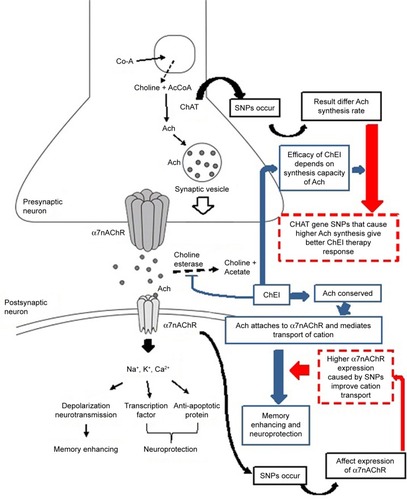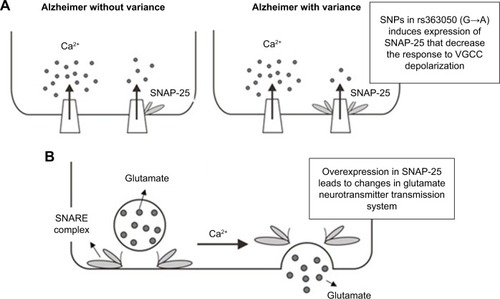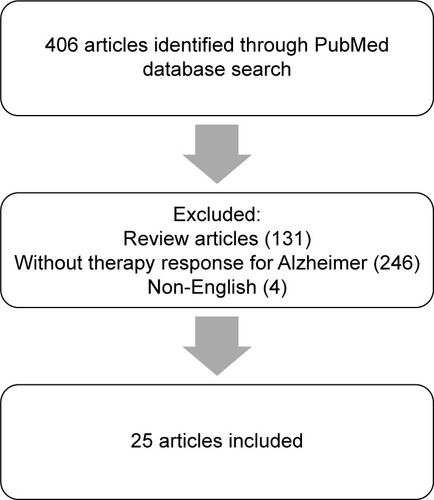Figures & data
Table 1 Association of gene polymorphism with therapy response
Figure 2 Possible mechanism of polymorphisms in ChAT and CHRNA7 affecting ChEI cognitive response.
Abbreviations: ChAT, choline acetyltransferase; ChEI, cholinesterase inhibitor; SNP, single nucleotide polymorphism.

Figure 3 The role of SNAP-25 in presynapse.
Abbreviations: SNAP-25, synaptosomal-associated protein of 25 kDa; SNP, single nucleotide polymorphism; VGCCs, voltage-gated calcium channels.

Table 2 Illustration of occurrence of polymorphism in healthy individuals

